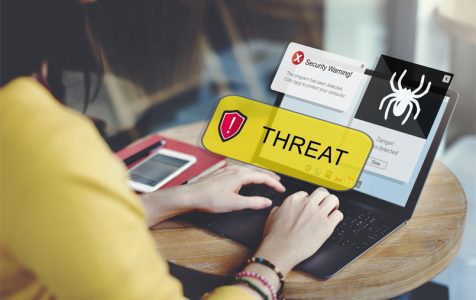Nothing screams lack of luck more than a corrupted important file. The breakheart brought about by a lost project that you worked hard on for nights on end can be unimaginable.
This is exactly what Qewe ransomware does to your PC.
What is Qewe Ransomware?
Qewe Ransomware is a member of the DJVU Ransomware family. A malware of Russian root, DJVU ransomware or STOP cryptoware codifies the user’s data using the AES-256 algorithm. But rather than encrypting the entire file, it only does it to the first 5 MB. Then it asks for a ransom, approximately $980 in Bitcoin, for you to recover your file.
As a DJVU ransomware, Qewe ransomware makes infected files inaccessible for viewing and renders them unusable. The infected files will have the file extension .qewe. Just like any STOP ransomware, Qewe will then send you a ransom, demanding you a payment to get the file decrypted and then recovered.
Some cybersecurity experts might argue that paying the ransom is the only surefire way to retrieve your files. But what has to be done is to remove the ransomware as soon as possible.
How to Remove Qewe Ransomware
Before trying to remove the virus, you need to restart the system in Safe Mode with Networking. Only then can you start downloading or running antivirus programs that can remove the ransomware and the files it carries with it.
Here’s how to reboot the system in Safe Mode with Networking:
For Windows XP / Windows Vista / Windows 7:
Step 1: Restart your PC.
Step 2: Once a boot screen appears, repeatedly hit the F8 button until a list appears.
Step 3: Scroll down to Safe Mode with Networking and press Enter.
For Windows 8 / Windows 8.1 / Windows 10/11:
Step 1: Go to the Start menu and select Settings.
Step 2: Choose Update & Security > Recovery > Restart now.
Step 3: Once your device has rebooted, go to Troubleshoot, then click on Advanced Options, then Startup settings, and then click on Restart.
Step 4: After your device has restarted, tap F5 to enable Safe Mode with Networking.
Once your device has restarted in Safe Mode with Networking, you can start running an anti-malware program and remove all the files related to the Qewe Ransomware.
How to Decrypt Files Infected by the Qewe Ransomware
There are numerous methods to attempt the decryption of files affected by Qewe ransomware. While one might be tempted to engage with the ransomware developers or authors to pay the ransom, this course of action is strongly discouraged due to its potential risks and its potential to encourage cybercrime.
Another method considered by some is using decryption services, although this isn’t typically recommended as it may inadvertently support the cybercriminal industry. Instead, it’s advisable to wait for solutions from cybersecurity researchers, who continually work to find weaknesses in ransomware and offer free decryption tools when possible.
A way to make sure you don’t lose any files in the future is to back up your data. It pays to back up your data and check from time to time whether everything’s in order. So in the event that a malware entity attacks your computer, all you need to do is run antivirus programs, restart your PC, and then restore your files from backup. That way, you won’t lose anything and it’s as if nothing happened.
How to Protect Your Computer from Ransomware
Here are ways to prevent your computer from contracting the Qewe Ransomware:
- Keep an eye on new version updates of Windows and install them on time. These updates carry with them security measures that help prevent malware from entering your computer.
- Back up your files constantly. Do not copy your files to an external drive. Store them on cloud storage on the Internet, as doing so lessens the possibility of a virus infection.
- Avoid clicking on links that are contained in spam messages. They are in your spam folder for a reason. They are not for you to carelessly open and get redirected to shady websites. Should you wish to open email attachments, scan them first with antivirus programs.
- Get an effective antivirus software. Protect yourself from going through the hassle of decrypting files or losing a few Bitcoins by downloading a good antivirus program. This will prevent your computer from getting infected by a ransomware entity or any virus in general.
Have you ever been affected by the QEWE ransomware or any human-operated ransomware attack? Share your experience with us in the comments!
